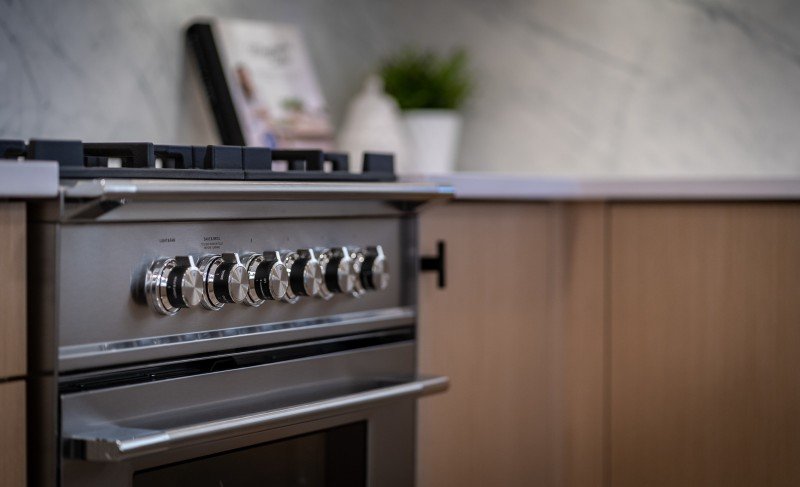This company has no active jobs
0 Review
Rate This Company ( No reviews yet )
About Us
Hob And Oven Tips To Relax Your Daily Lifethe One Hob And Oven Trick That Every Person Must Know
Understanding Hobs and Ovens: The Essential Kitchen Appliances
In the realm of kitchen home appliances, couple of products are as essential as hobs and ovens. These appliances form the foundation of culinary activities, allowing individuals to create whatever from simple meals to elaborate feasts. Comprehending the distinctions, types, and performances of hobs and ovens can significantly boost one’s cooking experience. This article looks into the complexities of hobs and ovens, providing insights that cater to both beginner and seasoned cooks.
What Is a Hob?
A hob and oven, My Site,, frequently referred to as a cooktop or stove top, is the flat surface area on which pots and pans are placed for cooking. Hobs are equipped with heating elements that generate the required heat for cooking food. They come in various types, including gas, electric, induction, and ceramic options. Each type offers special benefits and drawbacks.
Kinds of Hobs
-
Gas Hobs:
- Heat Source: Natural gas or gas.
- Advantages: Instant heat control and responsiveness, chosen by lots of chefs for accurate cooking.
- Downsides: Requires a gas connection and can be less energy-efficient.
-
Electric Hobs:
- Heat Source: Electric coils or smooth glass-ceramic surface areas.
- Benefits: Generally simpler to clean up, even heating, and commonly offered.
- Drawbacks: Slower to warm up and cool down compared to gas.
-
Induction Hobs:
- Heat Source: Electromagnetic currents.
- Benefits: Quick heating, energy-efficient, and only warms the cookware, not the surrounding surface.
- Downsides: Requires compatible pots and pans (ferrous products).
-
Ceramic Hobs:
- Heat Source: Electric and has a smooth glass surface area.
- Advantages: Sleek look, easy to tidy, and even heating.
- Disadvantages: Can take longer to warm up and cool down.
What Is an Oven?
An oven is an enclosed home appliance that cooks food by surrounding it with dry heat. Ovens can be standalone systems or integrated with hobs in a single home appliance referred to as a variety. Ovens are flexible tools that can be used for baking, roasting, broiling, and more.
Types of Ovens
-
Conventional Ovens:
- Heat Source: Electric or gas.
- Advantages: Good for traditional baking and roasting.
- Drawbacks: Can have unequal heat circulation.
-
Convection Ovens:
- Heat Source: Electric or gas with a fan for flowing air.
- Advantages: More even cooking and much faster cooking times due to airflow.
- Downsides: Can be costlier and might require adjustments in cooking times.
-
Microwave Ovens:
- Heat Source: Microwaves.
- Benefits: Quick cooking and reheating; fantastic for thawing.
- Drawbacks: Can not brown or crisp food well.
-
Steam Ovens:
- Heat Source: Steam generation.
- Advantages: Retains nutrients and wetness in food, much healthier cooking option.
- Downsides: Longer cooking times and normally higher cost.
Secret Differences Between Hobs and Ovens
While hobs and ovens serve the main function of cooking food, their performances and utilizes vary significantly. The following table summarizes these key distinctions:
| Feature | Hob | Oven |
|---|---|---|
| Cooking Method | Direct heat | Confined heat |
| Main Use | Boiling, sautéing, frying | Baking, roasting |
| Heat Source | Gas, electric, induction | Gas, electric, steam |
| Cooking Area | Flat surface area | Enclosed area |
| Cooking Time | Generally much faster | Varies based upon dish |
| Control & & Precision | Immediate and direct | Depend on settings and timers |
Advantages of Using Hobs and Ovens Together
Integrating making use of a hob and an oven can considerably improve the cooking process. Here are some benefits:
- Versatility: Different types of food can be prepared at the same time.
- Effectiveness: Using both enables numerous cooking methods, such as burning on the hob and baking in the oven.
- Time-Saving: Multi-tasking can substantially minimize overall cooking time.
Upkeep and Care
To make sure the durability of hobs and ovens, regular maintenance is vital. Here are some ideas:
For Hobs:
- Clean spills instantly to avoid staining.
- Use proper cleaners for specific products (e.g., ceramic cleaner for glass-ceramic hobs).
- Regularly inspect gas connections for leakages (for gas hobs).
For Ovens:
- Wipe down the interior after each usage to avoid accumulation.
- Usage self-cleaning features if readily available, or use oven cleaners for difficult discolorations.
- Frequently check seals and gaskets for wear and tear (to preserve heat performance).
Frequently asked questions About Hobs and Ovens
1. What is the very best kind of hob for a newbie cook?
Response: A ceramic or electric hob is frequently recommended for beginners due to relieve of usage and cleaning.
2. Can I utilize any cookware on an induction hob?
Answer: No, induction hobs need cookware made from magnetic materials (e.g., cast iron or stainless-steel).
3. How typically should I clean my oven?
Answer: It is advisable to clean your oven every few months, or more regularly if you use it frequently.
4. Is it better to bake in a stove?
Answer: Yes, convection ovens are often better for baking as they provide even heat distribution. However, some delicate dishes may gain from conventional ovens.
Understanding the performance and distinctions in between hobs and ovens is necessary for any cooking lover. Whether one chooses the instantaneous heat of a gas hob or the accuracy of an induction cooktop, each type uses distinct benefits. Similarly, ovens vary commonly in function, from conventional baking to steam cooking. By appreciating these appliances’ functions in cooking, cooks can enhance their culinary skills and simplify their kitchen activities.

